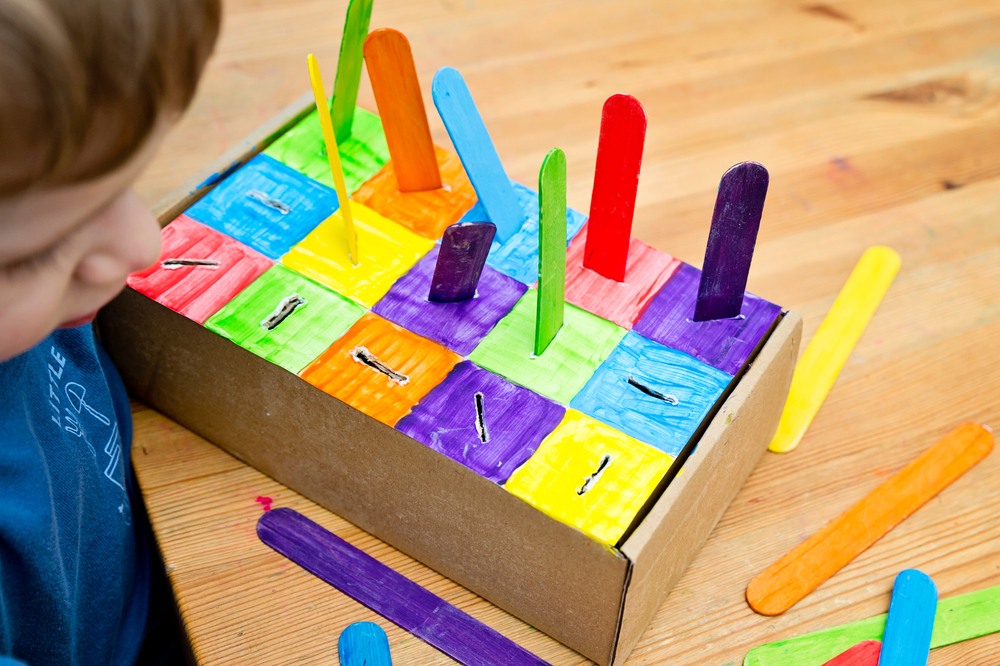Children love to play games and it is a very powerful tool when it comes to learning & skill-building through play. As a child plays, they are actively involved in observation, imitation, and learning. Each new game or activity introduces new words, actions, and skills that they must learn and perform.
5 Fun Games for Kids With Autism
1. Climb, Jump, Push, Pull, And Carry
Spacial awareness and relational space are often difficult areas for children with autism. This challenge can make them feel or appear clumsy or overly cautious. Providing opportunities to practice spatial awareness and movement can dramatically increase their awareness and body movement skills. Look for opportunities in nearby recreation areas and even with chores at home. Some examples include:
- Rock climbing
- Jumping on a trampoline
- Pushing a shopping cart
- Pulling a wagon
- Carrying groceries or laundry
The best part is that many of these games can be played at any age with slight variations and increasing complexity.
2. Emoticons: Emotion Icons
Learning and identifying emotions is a common social and communication skill that takes practice and creativity. As a fun game, you and your child can make helpful emoticons (like the images on your phone) using a few pieces of construction paper, markers, and a bit of glue. Draw and cut out a variety of eyes, noses, mouths, eyebrows, and tongues to share:
- Happy
- Sad
- Surprised
- Bored
- Frustrated
- Sleepy
- …there are many more.
Write the word on the back of each face and talk about what each one means and ways people might express that emotion.
3. Sorting Activities
Puzzles and sorting activities can be so much fun and educational. Activities like puzzles & matching teach categorization and organization skills. For toddlers, use blocks, dolls, and small toys. Sort the items by color, shape, or any other method. Like some of the other games, this one can be changed and adapted as the learning process continues to fit their skill level. Completing the game and following instructions also helps practice observational and communication skills. We find many families have great success with sorting activities.
4. Yoga Ball Exercises
Finding ways to expend a tremendous amount of energy is a usual struggle for children. Using a yoga ball is a fun and safe way to get maximum engagement of the mind and body. A few games include:
- Passing the ball back and forth
- Bouncing on the ball (without falling)
- Practice balance by laying on the ball
As with any activity, make sure your children are in a designated area with plenty of space. Introduce them to the games and activities and modify them to adjust the difficulty level.
5. Visual Organizers for Task Sequences
In this game, you will use visual cues that describe the several steps to complete a complex task. Start by breaking the task into manageable parts. Secondly, prepare a visual organizer for the child with images. For instance, posting a morning routine and checking off each task together.
In class, you may see our velcro-attached images that are fixed in place to represent daily tasks. Put the tasks in the correct order and have them complete the task with the visual sequence as their guide.
These are just a few ideas and games that we’ve collected from our team and patients. Still, each child is different and may need to be introduced to the game slower or faster than others. The important thing is providing an opportunity to practice.
At Solstice Behavioral Health & Consulting of Fairfield County, your child will participate in one-to-one ABA therapy, social skills groups, and group activities by qualified staff members. We know that together with home support, your child can learn and grow.


